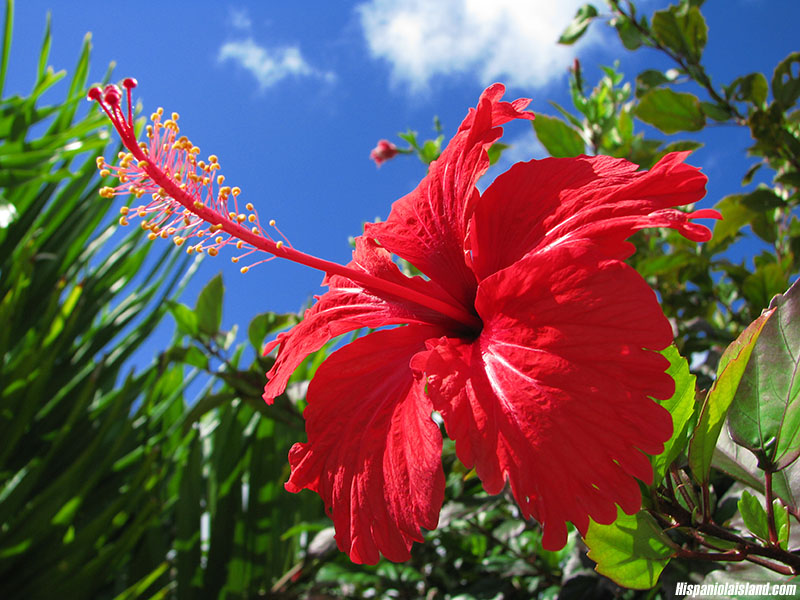Hibiscus rosa-sinensis, known colloquially as Chinese hibiscus, China rose, Hawaiian hibiscus, and shoeblackplant, is a species of tropical hibiscus, a flowering plant in the Hibisceae tribe of the family Malvaceae, native to East Asia.
Hibiscus rosa-sinensis was named in 1753 by Carl Linnaeus in his Species Plantarum. The Latin term rosa-sinensis literally means "rose of China", though it is not closely related to the true roses.
Hibiscus rosa-sinensis is a bushy, evergreen shrub or small tree growing 2.5–5 m (8–16 ft) tall and 1.5–3 m (5–10 ft) wide, with glossy leaves and solitary, brilliant red flowers in summer and autumn. The 5-petaled flowers are 10 cm (4 in) in diameter, with prominent orange-tipped red anthers.
The root is a branched tap root. The stem is aerial, erect, green, cylindrical and branched. The leaf is simple, with alternate phyllotaxy and is petiolate. The leaf shape is ovate, the tip is acute and margin is serrated. Venation is unicostate reticulate. (Venation is branched or divergent.) Free lateral stipules are present.
